Everything you need to know about golden rhododendron (kashkar)

If you want to acquire a rare and beautiful flower in your greenhouse, then you need to know the intricacies of caring for such a plant. Different types of crops when growing require an individual approach. The article will discuss such a plant as golden rhododendron, popularly also called kashkara.

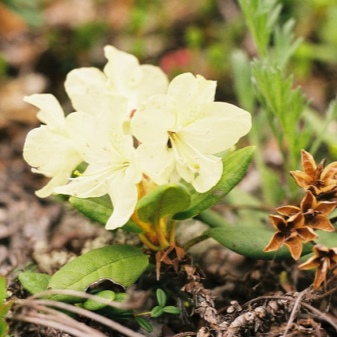
Description
Rhododendron golden is an evergreen plant and belongs to the stunted species. Kashkara belongs to the heather family. The shrub reaches a height of no more than one meter, and its stems are spreading and rising. The trunk of the Kashkara is curved and curved. The plant usually grows on rocky slopes with high moisture levels near the cedar forest.
- Glossy kashkara leaves have a bright green color, smoothly turning into white from top to bottom. The length can vary from 4 to 10 centimeters, and their width is from 1 to 3 centimeters. The leaves of the golden rhododendron have an oblong oval shape, the edges of which are usually curved.
- Plant flowers have a golden yellow hue, the diameter of which reaches 5 centimeters. Usually they bloom at the tips of branches in 4-6 pieces, and their shape is similar to a large funnel. Flowers are located on golden pedicels, which are longer in length than the flower itself. Kashkara blooms at the beginning of the summer season.
- Kashkara branches are considered stunted, and its bark has a dark brown hue.
- Rhododendron fruit golden ripens towards the end of summer. At the beginning of ripening, the fruit has a shape that resembles an oblong box. Its surface is slightly rough. When it ripens, the surface becomes smooth, and many small seeds appear in the capsule itself.
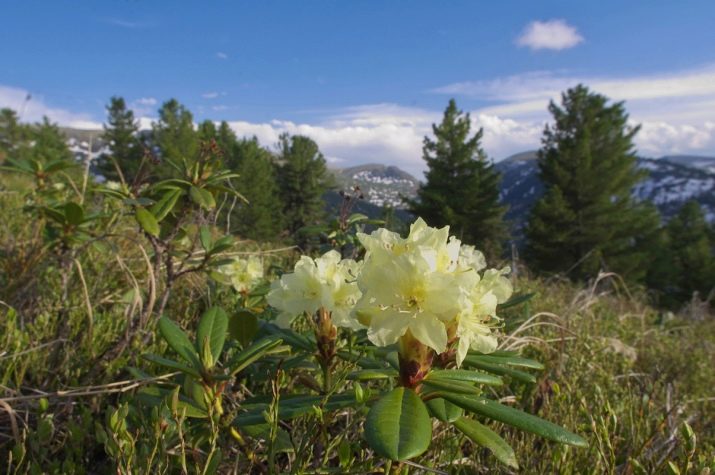
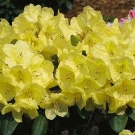
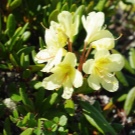
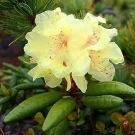
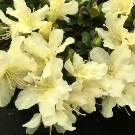
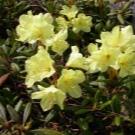
It is known that golden rhododendron is widespread in such regions of Russia as Western and Eastern Siberia, the Far East, and the Arctic. If the plant is located in meadows, it usually forms dense thickets. And also kashkara grows in forests in the form of undergrowth.
Landing
The main thing is to find a suitable place for the plant in the process of planting golden rhododendron. Kashkara does not take root well in open areas with abundant solar radiation. Therefore, for planting a plant, it is worth choosing a place on an area that is in the shade. But also the place must be protected from strong winds. For example, rhododendrons, which grow in their natural environment, usually concentrate in the shade of various plants - these can be pines or spruce.
And it is also necessary to take into account the fact that the plant does not like excessive moisture and does not tolerate stagnant water. Each Kashkara variety requires a different amount of sunlight. Large-flowered shrub species love partial shade, as for other varieties, they take root well in shaded areas.
However, if the plant is planted in absolute shade, the chances of it blooming are minimal.
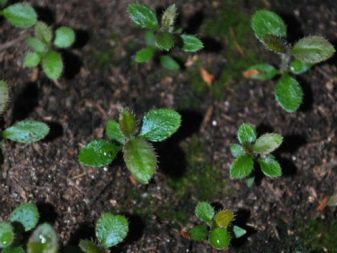
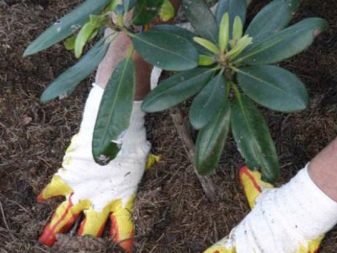
Rhododendron golden has excellent adaptive properties. For this reason, it is best to plant a plant in the ground in the spring. If the shrub is ripe, then together with the root system and earthy clod, it can be transplanted much later.
Before the actual planting process itself, it is recommended to dig deeply into the soil of your choice. After that, it is already necessary to add the substrate to the ready-made hole for planting. Leafy soil and peat are best. But you can also use superphosphate or turf.It is known that in their natural habitat the Kashkars choose the soil saturated with humus. The acidic soil is ideal for growing rhododendron. The surface of the soil into which the shrub was planted must be mulched regularly. The bark of a pine tree or pine needles will perfectly cope with this task. Spread mulching materials in a small layer, which should be at least 5 centimeters long. Mulching products are great for protecting the entire root system of a shrub and keeping the moisture necessary for a rhododendron.
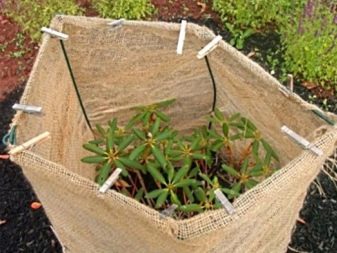

Care
In order to properly care for the plant, we bring to your attention detailed instructions.
- If you want to place kashkara in a room environment, it is recommended to put the plant on a window located on the west or east side. This is due to the fact that in such conditions the plant will be firmly protected from sunlight. Drafts also harm the rhododendron. To create a comfortable microclimate, it is advisable to place several plants nearby.
- Correctly selected soil is the key to the successful growth of kashkara. The soil must be loose and moderately moist, since stagnant water negatively affects the plant, while the environment must be acidic. A good option would be to buy a suitable soil and the necessary substrate in the store, in which case it may be sand.
- When planting, it is very important to pour drainage on the bottom of the pot, which will protect the plant from excessive moisture. After that, the soil is added, and everything is ready for the correct planting of the plant. It is not recommended to cover the root collar with soil. The next step is watering and mulching.
- By virtue of its natural habitat, the shrub is able to withstand frost up to 30 degrees. The plant cannot be called thermophilic, therefore the optimum temperature for it is from 10 degrees below zero to 20 degrees Celsius.
- It is recommended to water the rhododendron only with settled water.... In the warm season, it is necessary to carry out regular watering, as well as spray the bush. This will create a favorable microclimate and protect against various pests.
- It is advisable to select a fertilizer designed specifically for kashkara. The main thing is not to overdo it and fertilize in moderation. To ensure flowering, it is enough to fertilize only once in the spring season, and then only at the beginning of autumn.
- If you want your shrub to become more compact, you need to prune it, since kashkara lends itself well to various shapes. It is recommended to prune in early spring.
- Many are worried about the question of when it is possible to transplant a rhododendron. It is recommended to carry out this process during the spring season. And you can also transplant the bush after it has faded.
- It is very important to approach responsibly the issue of overwintering Kashkara. With the onset of cold weather, the plant must be placed in a cool place, +18 degrees will be enough to create comfortable conditions.
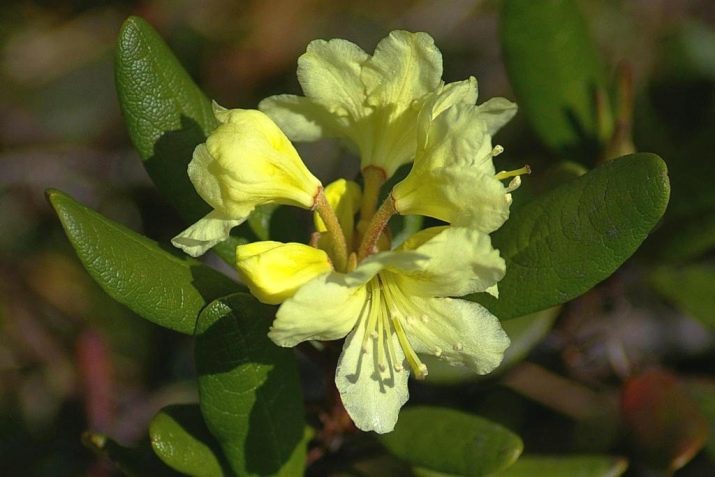





Reproduction
Kashkara has a fairly simple way of reproduction, which occurs with the help of layering, since the branches of the bush are spread along the ground. But there is also another sure way of propagation of golden rhododendron seeds, as well as cuttings.
- Reproduction by layering. The method is considered quite simple. You are required to cover one or a pair of branches with soil in the spring, and then water and spray the plant throughout the season. Exactly one year later, you can plant the shrub yourself by separating the seedlings.

- Propagation by cuttings... The process is carried out in the spring season, as well as after the flowering of the shrub in late summer or early autumn. You need to take the shoots and carefully separate them from the top of the cuttings. They are rooted in a light substrate. It is best to breed the plant in this way in greenhouse conditions, since there is a great need for moisture and heat.When three leaves appear on the cuttings, they can be planted in small pots for a while. In the winter season, plants will experience the need for coolness, therefore it is better to keep them in this season in such conditions.
Mid-spring will be a good time to transplant plants into regular pots.

- Reproduction by seeds. In order to sow seeds, it is recommended to choose a suitable substrate. For this, sand with peat is suitable. Sowing is best done in spring. Reproduction in this way also requires greenhouse conditions. Cover the plant, and after the first shoots appear, you need to remove the shelter.
Kashkara seeds have a high germination rate, so after the first leaves appear on the plants, you need to immediately transplant the plants into pots.
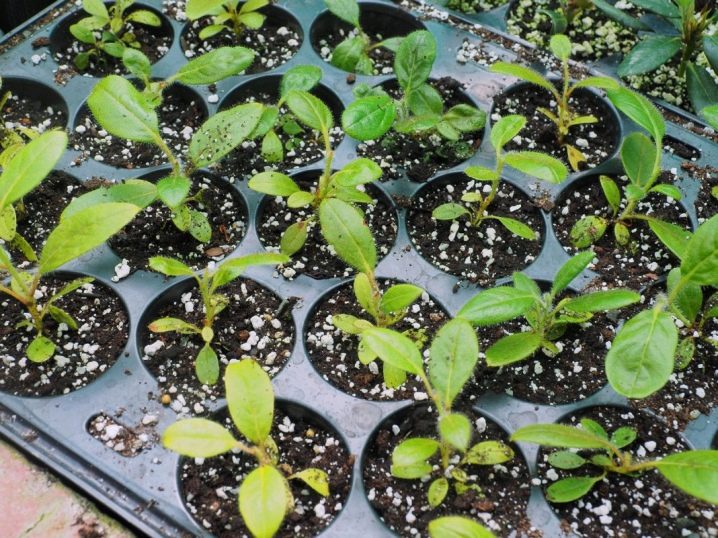
Diseases and pests
Rhododendron golden with frequent watering is very susceptible to various kinds of fungal diseases. And also such a disease can be provoked by improperly selected soil, we are talking about clay soil. Fungal diseases tend to spread very quickly in an environment with high humidity and low temperatures. But the fungus is not the only disease that can overtake the golden rhododendron.
- Cercosporosis... It is considered a rather unpleasant disease for the kashkara shrub. It usually appears with the appearance of dark spots on the plant, around which a red border forms. The leaves located on the lower branches of the plant are especially affected by the disease, and rainy weather affects the appearance of gray plaque.

- Mosaic... The disease has a number of characteristic features, one of which is the appearance on plants of small spots, which are colored yellow. In the future, such spots tend to darken, after which they become brown. The leaves of the golden rhododendron lose their appearance and become rough to the touch. Usually this disease is provoked by various pests, for example, it can be aphids. Bedbugs are also carriers of the mosaic. In order to avoid illness, it is recommended to spray the kashkara from time to time.
If you find that some of the branches of the plant are affected by a similar disease, then you need to cut them off and burn them.

- Anthracnose... This disease is fungal and has negative consequences for the plant. It manifests itself in the form of mottled formations on the leaves, which have a dark shade. In order to get rid of the disease, it is recommended to cut off the areas affected by anthracnose, after which the rhododendron should be sprayed with a special preparation, usually Bordeaux liquid is used.
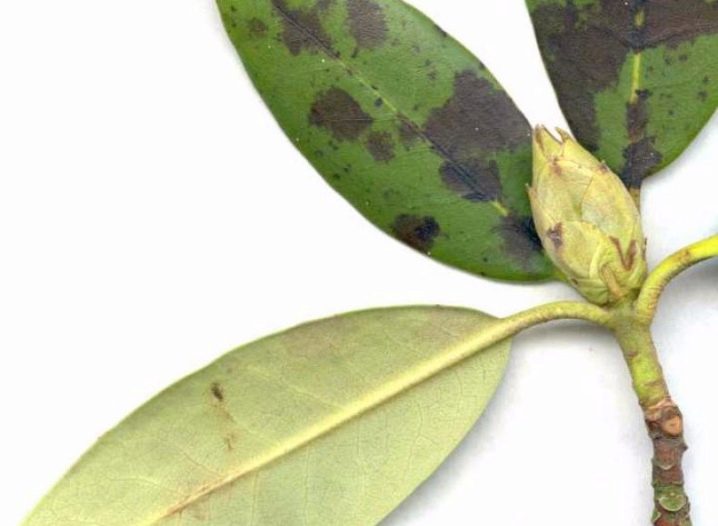
For a video about the care and breeding of rhododendrons, see below.





































































































The comment was sent successfully.